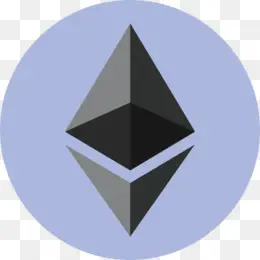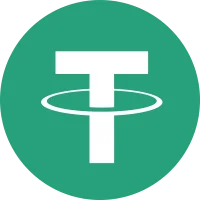Table of Contents
What is WiFi Map?
WiFi Map started life as a WiFi finder app back in 2014, offering a one-stop solution for locating and logging in to WiFi hotspots all over the world. The principle is simple: members of the public can add hotspots to the platform whenever they get connected, wherever they are. Other users can then verify that the hotspot works and the credentials are correct. The company is the creation of Denis Sklyarov, who has a background in equity trading and brokerage services, and Igor Goldenberg, whose experience includes software development and data security.
Since its inception in 2014, WiFi Map has grown to become the world-famous community-powered WiFi and connectivity ecosystem. With more than 100 million WiFi hotspots in its database, it has achieved over 1 billion internet connections, thanks in large part to its active contributor base of more than 13 million people, as well as high usage rates – there were 4 million monthly average users at the last count.

Core features
Even before the move to Web3, WiFi Map’s core offering has been growing with a number of connectivity and lifestyle features.
- WiFi Finder: The WiFi Finder feature on WiFi Map provides a map of hotspots around the world. The map is fully crowdsourced, meaning it’s constantly updated by users, ensuring that users have access to the latest information.
- Offline Maps: This feature provides access to all the hotspots on the app even when you don’t have a connection, which is useful for those traveling to areas with unreliable or expensive data services, or for people relying exclusively on WiFi.
- Global eSIM: WiFi Map’s 70-country eSIM feature provides a backup cellular connection. This means you can access the internet from anywhere inside the supported countries, serving the needs of business travelers or anyone who needs to stay connected while on the move.
- Built-in VPN: With cyberattacks on the rise, online security and privacy are more critical than ever. WiFi Map’s built-in VPN feature aims to provide security and privacy for its users’ online activities, something that is especially important when using public WiFi networks.
- Speed tests: Slow internet speeds can be frustrating and a hindrance to productivity. WiFi Map’s speed test feature allows you to measure the speed of your internet connection, ensuring that it meets your connectivity needs. The rest of the community can see the results of any speed tests, allowing them to see at first glance whether the connection can meet their conferencing, calling or gaming needs.
How it all began
WiFi Map was founded by Igor Goldenberg and Denis Skylarov. The two friends came up with the idea for the app after experiencing the frustration of trying to find free WiFi while traveling. They realized that there was demand for a single place where people could share free WiFi hotspots, and decided to create an app that would allow users to provide information about WiFi hotspots in their area.
Their vision was to create a platform where people could easily find and share information about any public WiFi hotspot, with the network effects ultimately creating a global database that would allow anyone to stay connected wherever they went.
Initially, the app was created as a side project while the founders were working on other projects. It quickly became very popular, however, and they decided to focus on it full time. They managed to gain a competitive advantage among their peers with the help of the above-mentioned features, including speed tests, eSIM and VPN offerings, as well as offline maps.
Today, WiFi Map is available in more than 200 countries and is used by millions of people every day.
The move to Web3

The founders, alongside around 40 core team members, announced in 2022 that they would be bringing the WiFi Map community of 160 million people into Web3 with the launch of the $WIFI utility token. The aim of the move is to expand the platform and reach more people, largely by facilitating the monetization of the wealth of data on the platform. In turn, this drives the rollout of new features and partner services, while keeping the app free at the point of use.
In terms of how the token would actually function, the idea was based in part on a connect-to-earn model, rewarding community members in $WIFI for adding hotspots to the map, verifying networks and running speed tests. They will then be able to use the token to access paid services in the app, such as eSIM data packages and VPN, as well as pro features like an ad-free experience and offline maps. Perks for users who hold the token within the app are also planned.
A major pivot to Web3 is an unusual step for a longstanding app with a viable operational model, but the founders believe tokenization is an ideal fit for an ecosystem that has been based on a decentralized network of active community members since its inception. New gamification elements are also being rolled out on the platform, and the introduction of a utility token that can be purchased, sold and traded on third-party exchanges is likely to boost the appeal of this aspect.
The $WIFI launch
The launch of $WIFI followed not long after, in 2023. Following a private sale, the initial token launch was done through the TrustSwap Launchpad on March 30. The token sale was a success, and the allocation was oversubscribed by a factor of more than ten. The TGE then took place on April 7, and the token was immediately listed on several major exchanges.
The WiFi Map team also conducted an airdrop of $WIFI tokens to existing users of the app. The airdrop was a reward for users’ historic contributions to the platform and served as a way to encourage them to continue to use the app and contribute to the database. The retroactive rewards are now being followed up by monthly connect-to-earn challenges.
Where to trade $WIFI
At present, $WIFI can be traded on six exchanges: OKX, Huobi, Poloniex, Gate.io, MEXC, and BingX. OKX offers both a centralized option for trading on the main exchange and decentralized trading with the OKX DEX wallet. Gate.io is a fully decentralized exchange. All trading takes place under the WIFI/USDT trading pair.
Further to this, OKX offers a WIFI Earn product as part of its OKX Earn staking program. Traders on the platform can earn up to a 20% APY (annual percentage yield) if they stake WIFI for 90 days, while a 3% APY is available for three-day staking.
$WIFI utility today
The $WIFI token has real-world use cases as of the TGE, marking it out from many utility tokens in the Web3 space.
- Buy and hold in the app: Users can buy $WIFI directly inside the app and hold it there to redeem it later for premium features.
- Redeem for eSIM: The first feature that people can redeem $WIFI for is the eSIM package, which was recently reduced in price from $4.99 to $3.99 per gigabyte.
- eSIM cashback: Mobile data can either be purchased with fiat or redeemed using the $WIFI token. When using $WIFI, 15% cashback is awarded and deposited into the user’s in-app crypto wallet. With fiat purchases, 3% $WIFI cashback is awarded.
- Trade on exchanges: The $WIFi token can be traded in the WIFI/USDT trading pair on six exchanges: OKX, Huobi, Poloniex, Gate.io, MEXC, and BingX.
- Connect-to-earn: Each month, rewards are airdropped to the users who contribute the most to the platform by adding hotspots, verifying network credentials, and running speed tests.
- Tipping feature: As of early Q2 2023, users can thank the people who added the hotspots they’re connecting to by sending them a small amount of $WIFI as a gesture of appreciation.
- Redeemed $WIFI flows into a DAO: 10% of all $WIFI redeemed in the app is earmarked for a WiFi Map DAO, which will empower the community to act as a decentralized treasury and make decisions that benefit the ecosystem’s future.
The year ahead

The founders are promising more utility very soon, and the company is aiming high in the medium term.
A core plank of the company’s new phase of operation will be an MVNO (mobile virtual network operator) offering. WiFi Map’s own WiFi-First technology will allow customers with eSIM packages to switch seamlessly between WiFi hotspots and mobile data, conserving data compared with browsing on cellular. By combining this with crowdsourcing and proprietary AI technologies, WiFi Map hopes to become a world-leading mobile virtual network operator in the Web3 space.
The company aims to bolster its reputation by bringing together connectivity and lifestyle services in a unique hybrid model. To further enhance this vision, WiFi Map has forged strategic partnerships with power bank sharing startups Chargefon and Fast Energy. Further to this, users will soon be able to access electric scooters, rideshare companies, and other innovative lifestyle services right from the WiFi Map app.
According to the project’s creators, the superapp model means that, a year from now, the app could do the work of five of your favorite apps in one place.
So what is DeWi?
DeWi, short for decentralized wireless, is a new development in the world of wireless technology. In a similar fashion to what DeFi is doing for Web3 in the financial sector, DeWi aims to offer a more open and community-driven approach to wireless connectivity. Through the power of blockchain technologies and decentralized networks, users can take control of their own connectivity, without relying on centralized telecoms or internet service providers. Its participants believe that the new paradigm could transform the global telecoms sector in the medium term, building a more accessible, equitable, secure and, perhaps most importantly, stable and resilient internet for all.
Examples of players in the DeWi and DePIN (decentralized physical infrastructure networks) include Helium, Pollen Mobile, World Mobile Token, and Wayru.
Why $WIFI is seeking the crown
WiFi Map distinguishes itself from the many companies operating in the Web3 space for a number of reasons. First and foremost, it boasts an impressive track record of achievement, having already amassed over 1 billion connections in the app and a devoted, global user base. This established user base represents a ready-made market for WiFi Map’s Web3 offerings, providing a significant competitive edge when it comes to the tokenization process.
WiFi Map has a seasoned team of entrepreneurs and technologists, led by co-founders Igor Goldenberg and Denis Skylarov. The team’s expertise in software development, cybersecurity, and business strategy gives WiFi Map a distinct advantage in innovation and execution. This talented group of individuals enables the company to swiftly improve its products and services, allowing it to seize its first-mover advantage.
Although other established players, such as Helium, Pollen Mobile, and Wayru, integrate wireless communications with tokenized ecosystems, WiFi Map has a significant edge over its competitors – the basic ecosystem infrastructure doesn’t require the installation or management of physical devices. This means it’s much more accessible to users across all market segments and can be scaled up far more quickly.
In addition, the $WIFI token provides exclusive access to features and discounts within the WiFi Map ecosystem. This utility gives $WIFI real-world value, providing users with a strong incentive to use and hold the token, resulting in a virtuous cycle of adoption and growth. The $WIFI token adds to WiFi Map’s unique value proposition, creating a compelling reason for users to join the WiFi Map ecosystem.
There are still 3.7 billion people who don’t have a stable internet connection – WiFi Map is aiming to lead the DeWi revolution and be the product that reaches them first.
Crypto Ping Pong Digest
Trash style news. You will definitely like














